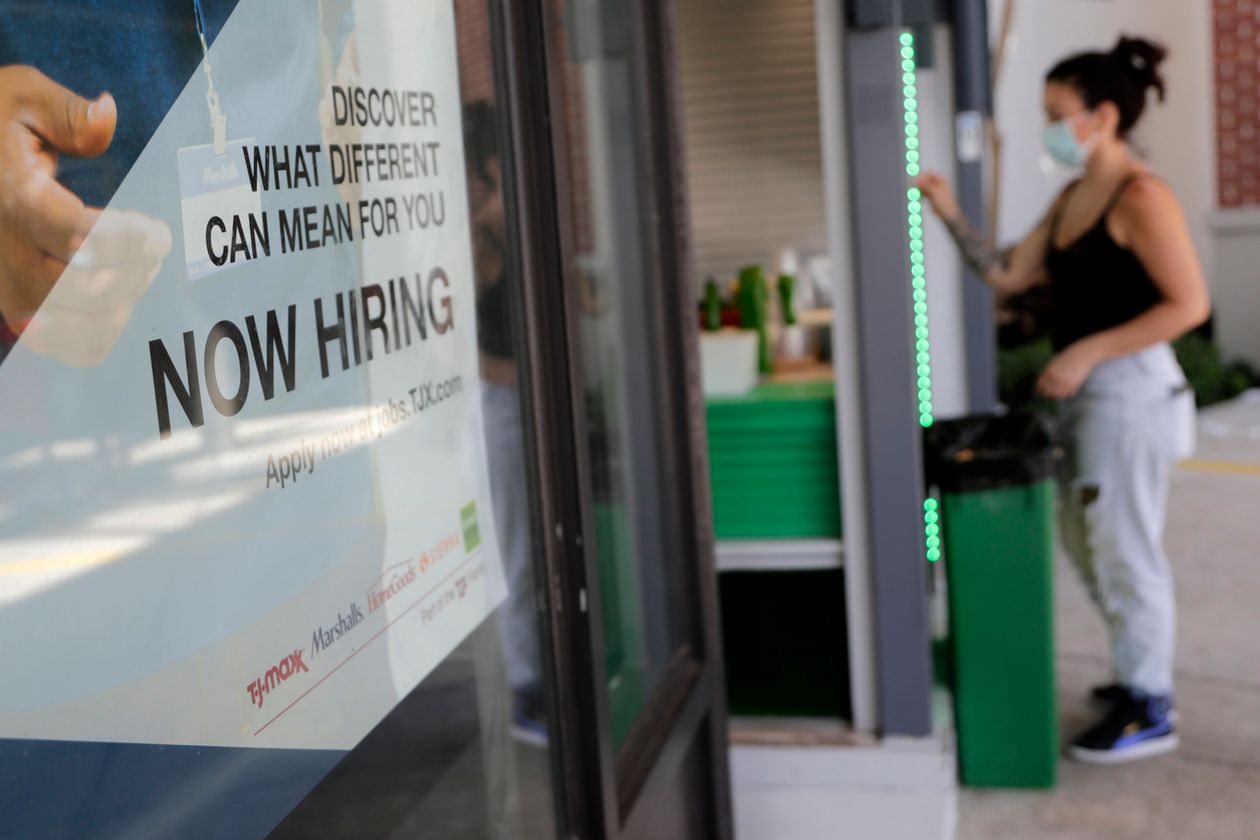By Sarah Chaney, Wall Street Journal–
Employers added 1.8 million jobs in July, and the unemployment rate fell to 10.2%, so far recovering less than half of the jobs lost due to the coronavirus pandemic.
July’s job growth followed May and June’s combined payroll gain of 7.5 million as many states lifted lockdown restrictions on businesses. There are now about 13 million fewer jobs than in February, the month before the coronavirus hit the U.S. economy.
Last month’s jobless rate showed Americans were returning to work. The Labor Department said job gains occurred in hospitality, government, retail, business services and health care.
Still, unemployment remains historically high. Before the coronavirus drove the U.S. into a deep recession this year, the unemployment rate was hovering around a 50-year low of 3.5%.
“On balance, we’re still in a hole,” said Julia Coronado, economist at MacroPolicy Perspectives. “The pace of recovery has really been set back by the resurgence of the virus. Given how far we have to go to re-employ the people who have become unemployed, that’s very discouraging.”
The number of workers filing for unemployment benefits fell last week to the lowest level since March, though remained historically high at 1.2 million new applications. That indicates the labor market was still healing in late July.
The economy entered a recession in February and appeared to begin a recovery as early as April. Economists say the speed at which businesses hire and consumers spend depends, in large part, on the course of the virus. Many consumers remain hesitant to resume store visits, dine out or board planes as virus cases remain high. Some businesses face renewed government restrictions.
Jeremy Murray’s patio bar in Austin, Texas, closed for 12 weeks starting in March, then had only reopened for about a month when it was forced to shut down for a second time in late June, as Texas grappled with a surge in reported Covid-19 cases. The bar, called Kitty Cohen’s, was making about a third of the revenue it had in the same month last year, Mr. Murray said, but at least the money was enough to cover rent and other expenses.
A Federal Reserve Bank of St. Louis analysis found that states with a larger number of coronavirus infections cases since June saw the weakest job recoveries between early June and late July. Arizona, Florida and Texas were among the states with the sharpest increases in coronavirus cases and mild employment recoveries, the report said.
A Cornell University survey separately found that 31% of recalled workers had recently been laid off a second time, with most of these layoffs occurring in states without large virus surges.
New job postings are increasing in three main categories, according to ManpowerGroup: jobs that are transforming business, such as software developers; jobs that are moving things, such as delivery drivers; and jobs that are helping people, such as physicians.
The labor-market recovery depends on employers’ confidence and ability to meet employees’ desire to feel safe returning to work, said Becky Frankiewicz, president of ManpowerGroup North America.
“It’s not just about the economic conditions in the state or the status of the virus, it’s about how people feel,” she said.
“I think a lot of it was just due to people hunkering down and staying inside and not going anywhere,” he said.
By early May, patient visits were climbing and Desert Orthopaedic workers returned to regular 40-hour weeks. Mr. Washer said the business rebound was likely a result of patients’ need for medical care and relative comfort coming to a doctor’s office.
He fears, though, that patient numbers could drop again if the Las Vegas economy deteriorates.
“I have an uneasy feeling that I shouldn’t get too comfortable that things are back to normal,” Mr. Washer said.
The July jobs figures could influence the policy debate in Washington on extending extra unemployment benefits for millions of workers. A $600 a week benefit expired at the end of July.
The extra benefits helped Tracy Menasco, 51 years old, pay rent, grocery bills and student loans during the pandemic. The Spokane, Wash., resident was temporarily laid off from her sales job in April, and she was then told in June that her position was permanently eliminated. She said she hopes her savings will help cover costs since the supplemental jobless aid ended.
“I’ve stashed away what money I can, and I’m just trying to watch my budget and be careful,” she said.
Ms. Menasco is among workers who thought layoffs were short term but now see them as permanent. While most of those who lost jobs during the pandemic say their layoffs are temporary, the number who reported their jobs losses as permanent nearly doubled in June from March, to almost three million, according to the Labor Department.
Ms. Menasco has been applying for jobs since June, but she hasn’t had much luck, which she said is uncommon for her industry.
Sales jobs are “usually the last to go or the first one in, and it doesn’t seem to be safe in this economy,” she said.
—Kim Mackrael contributed to this article.
Write to Sarah Chaney at sarah.chaney@wsj.com


Leave A Comment
You must be logged in to post a comment.